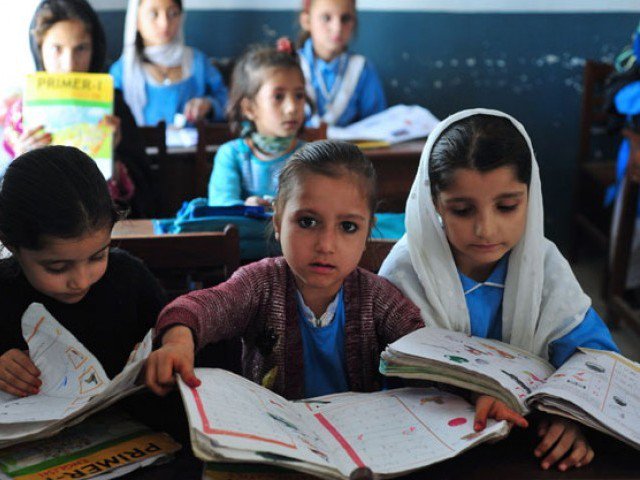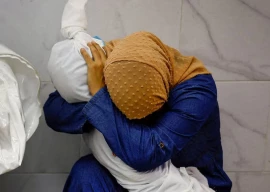
The education sector of Peshawar is faced with perennial challenges. The district has around 0.6 million out-of-school children. Those who are enrolled in government schools do not demonstrate strong learning outcomes. A number of schools in the district do not have adequate basic facilities like electricity and clean drinking water. Their classrooms are overcrowded with multi-grade teaching undertaken in several schools.
The Institute of Social and Policy Sciences, in collaboration with an NGO, evaluated the government schools of Peshawar, dividing it into its 11 constituencies. The rankings were based on two scales: quality of education (education score) and the state of basic facilities (school score).
The education score is the weighted average of four indicators: results of grade nine and ten, student-teacher ratios and student-classroom ratios. The school score is based on the weighted average of the percentage of schools with basic facilities (electricity, boundary wall, restrooms and drinking water).
Quality of education
According to the findings, PK-11 bagged first position with an education score of 78.98%. Special Assistant to Chief Minister Syed Muhammad Ishtiaq was elected from PK-11 on a Pakistan Tehreek-e-Insaf ticket. Over the past one year, Ishtiaq’s constituency has leaped from fifth to the first position.

SOURCE: INSTITUTE OF SOCIAL AND POLICY SCIENCES
PK-5 stood second whereas PK-8 came third in the district. The latter, whose berth is occupied by Pakistan Muslim League-Nawaz’s Arbab Akbar Hayat, has also improved. It stood ninth the last time constituency rankings were tabulated.
This goes to prove that stakeholders have actually begun to pay heed to performance evaluations and are working towards improving the state of affairs. On the flipside, PK-10, PK-4, PK-7 and PK-2 were reported to have scores below 45%.
Essential amenities
When it comes to facilities like electricity, boundary walls, restrooms and drinking water, PTI’s Shaukat Ali Yousafzai’s PK-2 stood first with a school score of 99.76%. Only a year before this near perfect score was achieved, schools in Yousafzai’s constituency stood fifth in the category. Boundary walls, restrooms and potable water facilities are present at all the schools of PK-2.
PK-4 stood second whereas PK-3 grabbed third position in the district. Around 50% of PK-7 and PK-10’s schools do not have electricity whereas students at over 35% of PK-10’s schools do not have access to drinking water on campus. Minister for Public Health Engineering Shah Farman hails from the constituency.
Government data was used to calculating the scores; a method that is expected to help in generating ownership of the analysis and provoking authorities to do the needful. Data provided in the study can help local politicos take affirmative action to address issues faced by government schools.
It will help people make informed decisions the next time they stand in the polling booths.
The ranking card can be accessed at www.i-saps.org.
The author is a research fellow at the Institute of Social and Policy Sciences, Islamabad. He can be reached at @abdullah_alam
Published in The Express Tribune, September 18th, 2015.


































































COMMENTS
Comments are moderated and generally will be posted if they are on-topic and not abusive.
For more information, please see our Comments FAQ